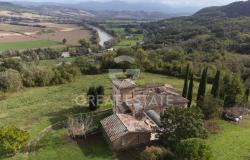 (ANSA) - A rare species of crab has taken up residence in one of the city's most important archaeological sites and is not only thriving but also growing to abnormal proportions.
(ANSA) - A rare species of crab has taken up residence in one of the city's most important archaeological sites and is not only thriving but also growing to abnormal proportions.
The freshwater crab 'Potamon fluviatile' was already known to survive in small numbers in rivers and waterways from Sicily to Tuscany, where it generally grows to a length of about 4 cm.
But according to three zoologists at the Roma 3 university, an isolated colony of the crabs is also doing very well in part of the ancient Roman forum, especially in the Trajan's Markets area.
In this patch of land, rarely visited by humans and crossed by many tiny rivulets, the crabs are routinely growing 50% bigger than normal. Although the overall size is still not large, experts say it is significant.
"This isolated urban population of crustaceans is giving clear signs of having taken its own evolutionary course," said Danilo Mainardi, a professor of behavioural ecology at Venice university.
"This is shown most obviously by their growth to giant size."
The crabs seemed to have adapted very well to their new home, unworried by the nocturnal lighting and noise of buses and cars on the nearby Via dei Fori Imperiali. They apparently suffer a little at the hands of the capital's many feral cats, pigeons and even rats, who see them as tasty titbits. But all these predators sooner or later die and their corpses in turn become food for the
crabs.
Zoologists say the new crab colony in the heart of Rome could turn out to be important for the conservation of the species, which risks dying out in rural waterways. They also say it fits into a more general phenomenon of cities, with their special ecosystems, providing many species of animals with new, but acceptable, habitats. Zoologists report that Rome in particular is now home to all sorts of surprising fauna. Falcons apparently live in the Colosseum, foxes come daily to eat leftovers near the law courts, the Tiber is home to rare species of fish and ducks and Roman parks
are a sanctuary to salamanders and beavers.
Zoologist Bruno Cignini has made an inventory of the animals now living in the eternal city. He found six species of amphibians, 15 species of reptiles, 26 species of mammals, 110 species of birds and 15 species of fish.
"Food is easy to get, there are no hunters, the climate is increasingly mild, plus there are 19 protected green areas," Cignini explained.












